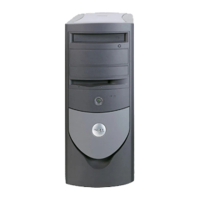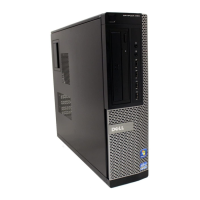l Wake from ARP
l Wake from NetBIOS name lookup
l Directed wake packet
The specification also defines Magic Packet as a wake-up method. Wake-up technology that uses PBM is controlled by the Microsoft Windows
OS because the OS programs the patterns. Therefore, PBM only works in systems that use the Windows OS with ACPI enabled. For more
information on PBM, please refer to the Network Device Class Power Management Specification.
Changing Remote Wake Up Options
To change Remote Wake Up options, enter System Setup by pressing <F2> during the start-up boot sequence. Tables 1 and 2 define remote
wake-up functions for each Windows operating system and system power state combination.
Table 1. Network Driver Interface Specification (NDIS) 4.0 Driver
Table 2. NDIS 5.0 Driver with ACPI Enabled
Remote System Alert
Remote System Alert allows the system to send to a remote management console certain predetermined messages about its operating condition
prior to system start-up (system boot). For example, the system can transmit an alert if the computer cover is removed.
To use the Remote System Alert feature, each Managed PC system must contain an integrated NIC that supports Remote System Alert.
Auto Power On
Auto Power On enables you to turn on the computer system automatically on certain days of the week at a preset time. You can set Auto Power
On to turn on the system either every day or every Monday through Friday.
Chassis Intrusion Alerts
Chassis intrusion alerts notify you if a local or remote system's chassis has been opened.
NOTES: When Remote Wake Up is set to Off, all wake-up events are disabled.
Wake from NetBIOS name lookup is not available in the Windows 95 or Windows NT 4.0 operating systems.

